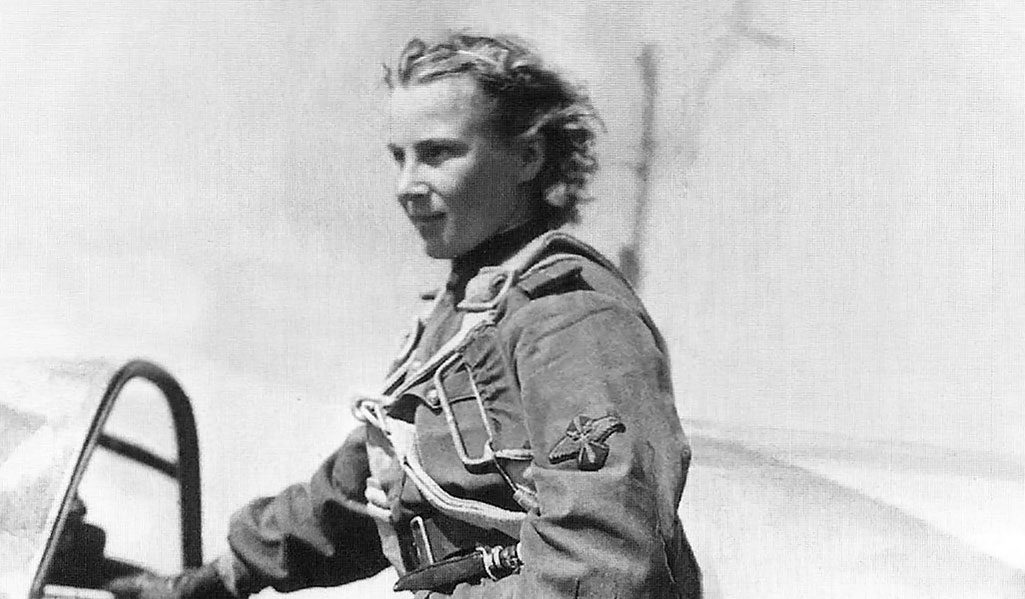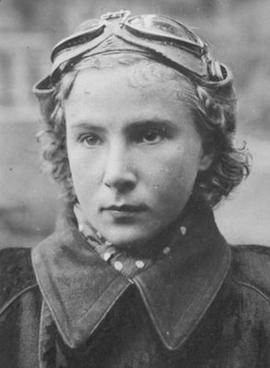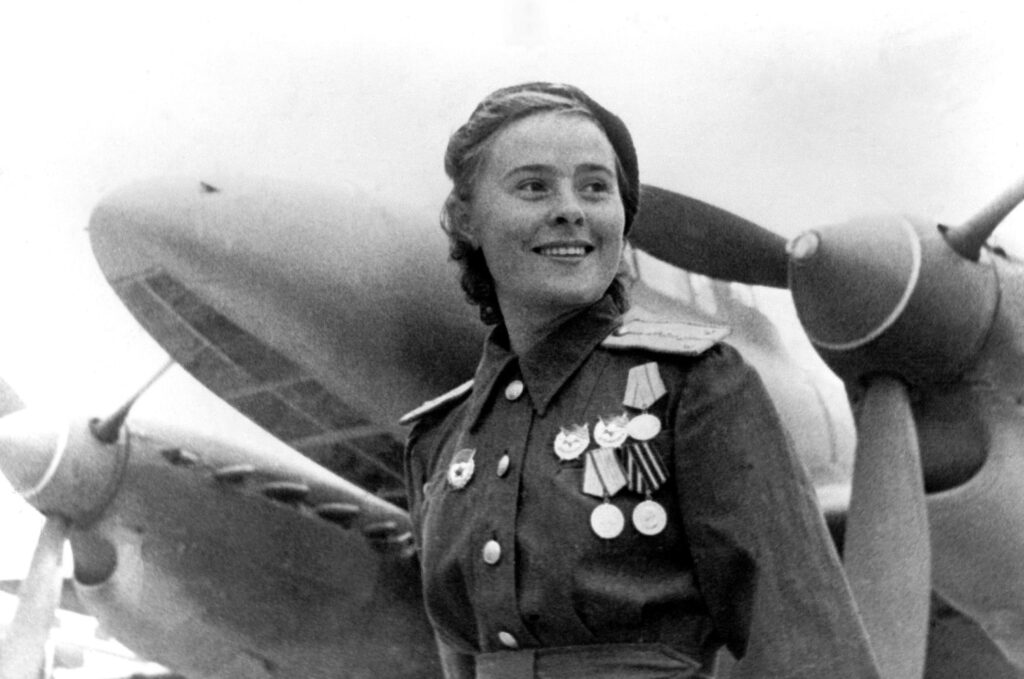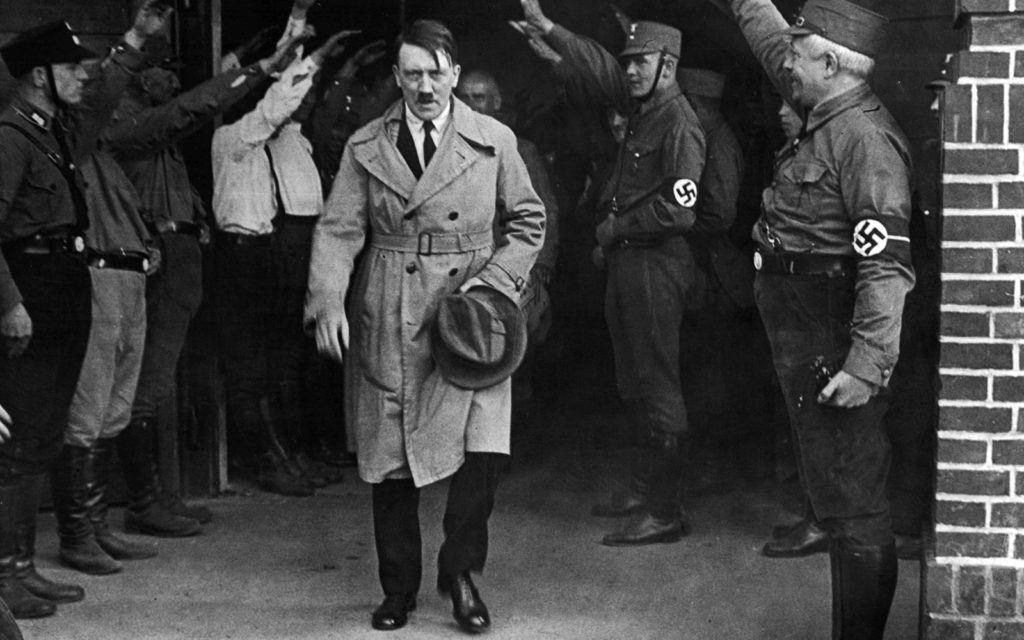Within the cockpit of her Yakovlev Yak-1, it’s possible that most of Lydia Litvyak’s enemies had little idea that it was a woman that would be their downfall. In a men-dominated field, Lydia Litvyak was as deadly a fighter pilot as any.
Her career was short but bright, and even after her death, she would go down in history as one of the most influential Russian pilots of all time.
Lydia was the first woman to shoot down an enemy aircraft, but she was more than just the records she held. Before the war, Lydia was an accomplished flight instructor in her own right, and once she took to the skies as an aerial ace for Russia, her talent was swiftly recognized.
Let’s look a little deeper into the life of Lydia Litvyak–not just her life as a pilot, but as a woman, too.

Lydia Litvyak’s Early Life
Born in Moscow, Lydia lost her father early in her life to the Great Purge orchestrated by Joseph Stalin. He was arrested and considered an enemy of the people, and this might have been the catalyst for his daughter Lydia to become desperate to clear her family name.
At the age of 14, Lydia discovered her interest in aviation and joined a flying club. It wasn’t long until she was embarking on her first solo flight at just 15 years of age.
After her first solo flight, Lydia attended and graduated from the Kherson military flying school, and became a flight instructor. World War II was close on the horizon, and by the time Germany invaded the Soviet Union, Lydia had already trained dozens of pilots on her own.
This made her ideal to volunteer for the Russian military’s first female aviation regiment, the 586th Fighter Aviation Regiment of the Air Defense Force, which had been formed by another influential female Soviet pilot, Marina Raskova.
Her passion for flying and her intense patriotism that had spawned from her father’s reputation as an enemy of the people should have made her an easy choice, but at first, she was rejected for lack of experience.

Frustrated, Lydia applied a second time, this time fudging the numbers and adding another 100 hours to her flight time. With the extra hours, she was accepted into the all-female regiment in 1941.
Lydia Litvyak in World War II
Once a part of the women’s regiment, Lydia trained to fly on the Yakovlev Yak-1, a quick and deadly fighter plane. Lydia would fly this sort of fighter plane for the rest of her time in the war.
In 1941, she flew her first combat missions. These missions were mainly for defense, and her success in them led her and a few of the other women in her regiment to be transferred to a male regiment near Stalingrad.
This regiment, known as the 437th Fighter Aviation Regiment, needed help, and Lydia was more than happy to offer her expertise. Strong-willed and brash, Lydia Litvyak showed little fear in battle, and this led to her gaining her first two kills on the 13th of September, only 3 days after she had first arrived.
The story goes that Litvyak first shot down a Junker Ju 88, which fell from the sky, burning all the way down. Her second kill was a Messerschmitt Bf 109G, one of the most dangerous fighter planes being flown at the time, which was piloted by a decorated German pilot.
The pilot managed to parachute from the falling Bf 109G and was captured by Soviet soldiers once he landed.
He asked to see the “Russian ace” who managed to take him down, and when Lydia was brought before him, the German pilot first thought he was being made fun of. Lydia quickly changed his mind, though, recounting step by step how their aerial battle had gone
She and the other women who had joined her in the men’s regiment stayed for a short time more, but eventually, Lydia would take on another position–that of a free hunter.
The White Lily of Stalingrad
After her time with the 427th, Lydia joined the 296th Fighter Regiment, where she would proceed to rise in the ranks. Lydia became somewhat of a celebrity in Russia–the beautiful but deadly female fighter pilot nicknamed the White Lily of Stalingrad.
Her reputation was earned. Lydia was granted the Order of the Red Star, and soon after selected for an elite aerial group known as the okhotniki, or ‘free hunters.’ The free hunters would work in pairs and take on fights of their choosing.

Her favorite partner was Captain Aleksey Solomatin, a man whom Lydia would eventually fall in love with. He was just as talented as Lydia and even more reckless. Some sources say the two were married in secret.
During this time, she was injured and took some time off to recover back at home with her mother. With her star continuing to rise and stories of her prowess spreading overseas, Lydia was back in the cockpit as soon as she was healed.
By the time she returned, Lydia had taken down dozens of enemy planes, and she had never been more confident.
This confidence was shattered, though, when Lydia’s flying partner and possible lover Solomantin died in a crash in front of the entire regiment as he was coming into land. This devastated Litvyak, and her fighting became more intense, reckless, and even desperate.
What Happened to Lydia Litvyak?
After the death of Solomantin, Litvyak would continue to succeed, even if the success felt hollow to her. She would become the commander of her squadron and even took down a tricky target–a German artillery observation balloon.
Tragically, Lydia Litvyak wouldn’t see the end of World War II. On August 1, 1943, Lydia would take her Yak-1 into the air for its final flight.
She and other members of her squadron were escorting ground attack aircraft when they were attacked by several German bombers.
Lydia engaged, but what she didn’t know was that there were fighter planes, Messerschmitt 109s, flying cover for the bombers. She was last seen, her plane pouring smoke, as up to 8 of the German fighter planes pursued her.
Litvyak was shot down, and she and her plane all but disappeared, ending the career and life of the White Lily of Stalingrad.
1979 Discovery of Lydia Litvyak’s Grave
Because of the possibility that Lydia had been captured by German forces instead of killed, she was never awarded the title of Hero of the Soviet Union.
Her dear friend and mechanic during the war, Senior Sergeant Inna Pasportnikova began a 39-year-long search for the remains of the female pilot and her Yak-1.
In the process, Pasportnikova would discover over 90 crash sites and other pilots that had been lost in action, but there was no sign of Lydia.
Finally, in 1979, Pasportnikona and her team learned that a female pilot had been buried in the village of Dmitrievka in the Shakhterski district of what is now Kazakhstan.
The body was exhumed, and after inspection, was concluded to be that of Lydia Litvyak. Finally, Lydia had been found, and she was posthumously given the award she had so long been denied–that of Hero of the Soviet Union.
References
“WCW: Lydia Litvak, The White Lily of Stalingrad”
https://cockpitusa.com/blogs/posts-without-blog/wcw-lydia-litvak-the-white-lily-of-stanlingrad
“The Short, Daring Life of Lilya Litvyak”

